Lodz, often pronounced as “woodge” and meaning “boat” in translation is situated roughly 130 kilometers southwest of Warsaw. While it may not immediately dazzle visitors with the charming squares that grace many other Polish cities and towns, Lodz stands out as one of the country’s most captivating and distinctive destinations. For an extraordinary and enlightening exploration of the world and its rich cultures, Lodz is highly recommended.
Traveling to Lodz from major Polish cities like Warsaw is incredibly convenient, thanks to its excellent infrastructure and strategic location. The European Rail high-speed train network provides efficient and swift connections between cities, offering passengers breathtaking views of stunning landscapes. My personal journey from Warsaw to Lodz was both seamless and enjoyable, with an average travel time of about 1 hour and 30 minutes. Regardless of the duration of your trip, the significance of comfort cannot be overstated.
Lodz’s recent history is closely tied to its textile industry, which propelled the city to prosperity during the 19th century, earning it the moniker “Manchester of Poland.” This economic boom resulted in the construction of grand palaces and mansions by affluent mill owners and industrialists like Izrael K. Poznanski, leaving an enduring architectural legacy throughout the city.
Despite its industrial character, Lodz was also a vibrant cultural hub and the birthplace of renowned writers, poets, and musicians such as Arthur Rubinstein, Yitzchak Katzenelson, Artur Szyk, and Julian Tuwim. However, with the decline of communism, Lodz saw the gradual fading of its once-thriving textile industry, which left the city grappling with a host of challenges and issues to address.
Lodz boasts a significant Jewish heritage, and its Jewish sites offer a fascinating glimpse into the city’s history. The Lodz New Jewish Cemetery, located on Bracka Street, stands as the largest Jewish cemetery in Europe. Established in 1892, it holds an impressive array of over 180,000 graves, adorned with 65,000 tombstones, Ohel’s (architectural structures built over the graves of revered individuals), and elegant mausoleums.
The cemetery’s grandeur is evident in its main pathways, reserved for individuals of high social standing. Numerous tombs pay tribute to prominent factory owners, such as Silberstein, Prusak, and Stiller. One must not overlook the breathtaking Art Nouveau-style mausoleum dedicated to Israel Poznanski, the cemetery’s founder. The Konsztat family tomb stands out as a remarkable site, featuring a beautiful Tuscan colonnade, while Marcus Silberstein’s tomb reflects Hellenistic design influences. Nearby, you’ll find the family tombs of other renowned industrialists from Lodz, including the Cohen, Jarociscy, and Prussak families.
Many of the more modest burial plots are intertwined with lush greenery and shaded by towering trees, creating an eerie yet captivating beauty that adds to the cemetery’s unique allure.
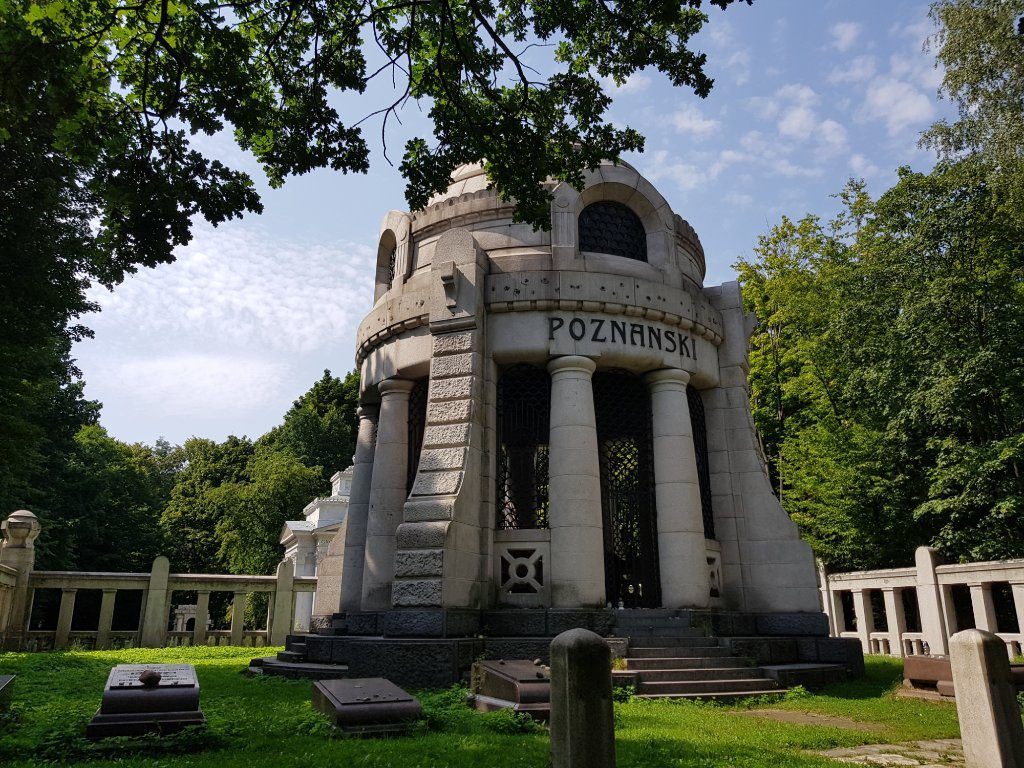
The mausoleum was built in Art-Nouveau style for Israel Poznanski – New York Jewish Travel Guide
Continuing our stroll through the cemetery, we come upon the poignant Ghetto Field, a section that presents a stark contrast to the traditional Matzevot (headstones). Here, the landscape transforms into a vast open area adorned with concrete stones, small metal plaques, upright slabs, and a few newly placed Matzevot by grieving families.
This somber space bears witness to the tragic history of the Lodz ghetto, where an estimated 45,000 individuals who perished or were victims of violence between 1940 and 1944 found their final resting place. As we proceed leftward, heading towards the wall and tracing the path along the prewar quarters, we encounter a series of pits that were originally intended as mass graves. These pits were to hold the remains of over 800 Jews who, following the liquidation of the ghetto in 1944, were left behind to clear the land. Remarkably, they managed to survive the war, as the retreating Germans fled when the Soviet Red Army approached the city. These pits have been left uncovered as a solemn reminder of that harrowing period in history.
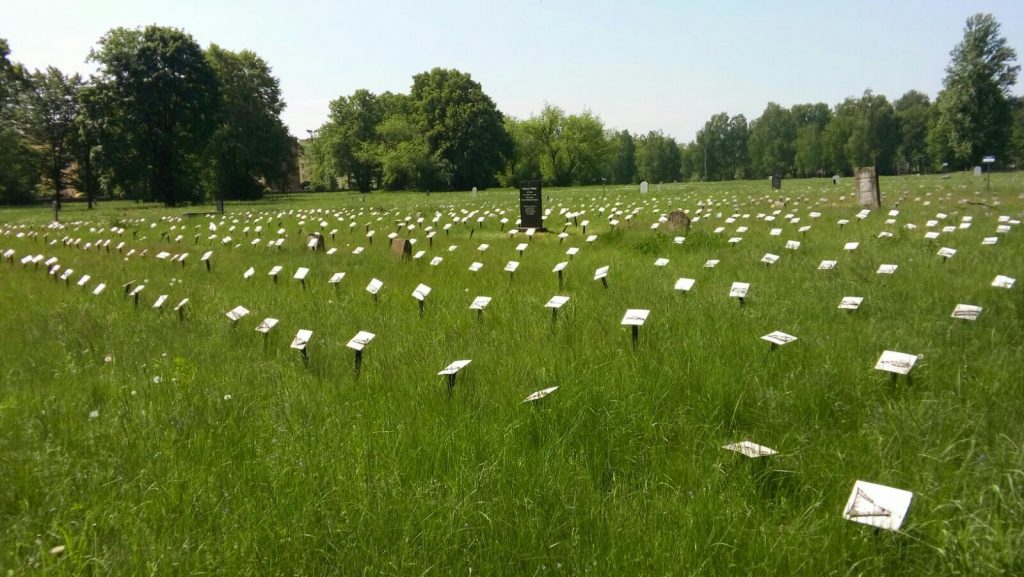
The Ghetto Field in the Lodz Cemetery- New York Jewish Travel Guide
In 1959, a monument was erected within the cemetery to honor and remember the Jews of the Lodz ghetto who tragically lost their lives during the Holocaust. This solemn monument features a black marble plaque inscribed with the following heartfelt message in Hebrew, Yiddish, and Polish: “This monument is dedicated to the blessed memory of the innocent victims, Jews from Lodz and the surrounding areas, who were brutally murdered in the ghettos and camps by Nazi criminals during the period from 1939 to 1945. Your memory will forever dwell in our hearts.”
The cemetery also serves as the final resting place for esteemed Tzadik (righteous figures) and rabbis, including Elimelech Weissblum, the son of Abraham Icchak, who hailed from the distinguished Elimelech the Great family of Leajsk and was a Tzadik in Staszów. Another revered figure interred here is Meir Bornstein, son of Zew Nachum.
For additional information and insights, you can visit the following website: www.jewishlodzcemetery.org/PL/OCmentarzu/OCmentarzuNaBrackiej/Default.aspx.

Rabbi Eliyahu Hayim Maizel – New York Jewish Travel Guide
During our visit to the Radegast Station, we explored one of the most significant historical sites associated with the Lodz ghetto. This station served as a tragic departure point for as many as 200,000 Jewish individuals from Poland, Austria, Germany, Luxembourg, and Czechoslovakia who were destined for the death camps. Remarkably, the original wooden station building and its loading platform remain intact to this day.
As we approached the central area of the memorial site, walking along the path, our attention was drawn to the Column of Remembrance. This solemn structure, resembling a chimney, bears the poignant inscription, “Thou shalt not kill.” Beyond the column, a tunnel is engraved with the start and end dates of World War II. In the distance, the paved courtyard and the wooden station building itself came into view.
On the station’s platform, three original cattle cars were displayed with their doors open. One car was intentionally left open for visitors to briefly step inside and experience the cramped and harrowing conditions that victims endured during their transportation. For many visitors, this encounter is deeply unsettling, leaving them with an overwhelming sense of horror and a profound inability to fully comprehend the unimaginable suffering endured by those confined in such cattle cars for days on end.
For many visitors, the most poignant aspect of the memorial is the long tunnel that seemingly leads nowhere. The designers of the memorial extended the track beyond the railcars into a dark tunnel. Lit by sensors, this tunnel unveils a haunting display of names, bearing witness to the individuals who were tragically transported to their deaths. Additionally, large signposts in the shape of headstones indicate the destinations of the trains that departed from this very station. Plaques throughout the site serve as poignant reminders of the Jews from Vienna and Luxembourg, who, after passing through the ghetto, were also transported to the death camps.
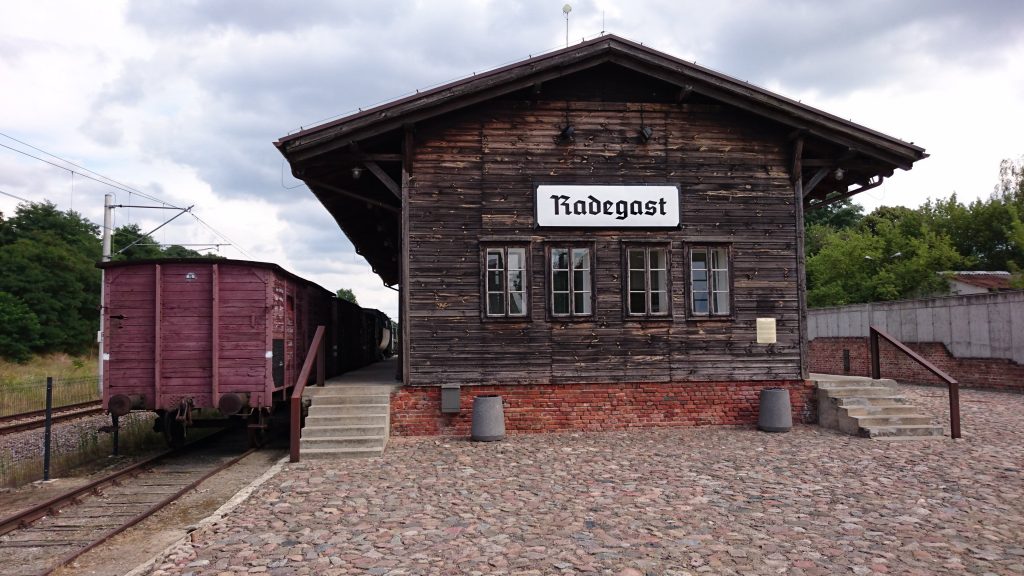
Radegast Station – New York Jewish Travel Guide
Annually, Lodz observes the anniversary of the Litzmannstadt Ghetto liquidation, a somber tradition now in its 74th year, taking place every August. The commemoration commences with a solemn memorial service conducted at the Lodz Jewish Cemetery. Following this service, participants embark on a two-mile memorial march that leads to the Radegast station, a site of profound historical significance as the central arrival and departure point for all transports to and from the ghetto during that harrowing period. Alongside the route, three cattle cars, reminiscent of those used for transporting Jewish individuals, serve as poignant reminders of the past.
The commemorative program encompasses a range of activities, including exhibitions, film screenings, workshops, and meetings with special guests. These events aim to provide a platform for reflection and remembrance.
Rabbi Dawid Szychowski of Lodz shared the significance of these commemorations, stating, “For us, the Jewish community, it is a means to honor the memory of the deceased and those who were murdered. It is also an opportunity to contemplate Polish-Jewish relations, both in the past and in the present, today and in the future, because such events offer us the chance to connect and build relationships with the residents of Lodz.”
A startling revelation for most tourists, and even many Polish citizens, is the existence of a concentration camp exclusively for children. During the dark days of the German occupation, Lodz was home to a concentration camp specifically for children, making it possibly the sole facility of its kind in Europe during World War II. These innocent children, who were often transferred from other camps like Auschwitz-Birkenau, Majdanek, or Stutthof, found themselves in a place known as “Little Auschwitz.” It’s important to note that these young detainees were not of Jewish descent; rather, they were Polish children whose parents were deceased, missing, unaccounted for, or imprisoned. Many of these children had been caught committing minor offenses like stealing food or begging for survival. Their ages ranged from 2 to 16, with the older ones slated for eventual transfer to adult labor camps. The camp typically held an average of around 3,000 children at any given time.
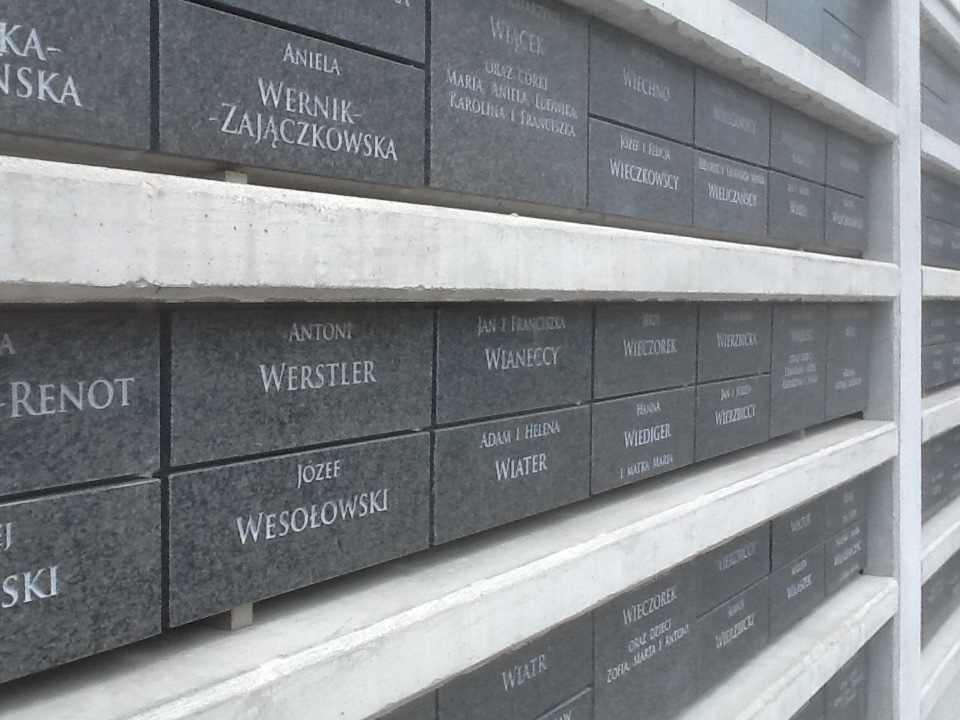
The names of the heroes are listed on a wall in Yad Vashem’s Garden of the Righteous.- New York Jewish Travel Guide
A documentary film titled “We Were Stripped of Our Whole Childhood” recounts the harrowing story of this camp, and in 1971, a memorial was established in Szare Szeregi Park in Lodz to honor these children. Furthermore, a commemorative plaque was unveiled in the local cathedral, and each November, prayers are held at the Memorial of the Children Martyrs of Wars, also known as the Monument of a Broken Heart, to pay homage to their memory.
The Marek Edelman Dialogue Center, established in 2010, serves as a hub dedicated to celebrating the multicultural and multiethnic heritage of Lodz. Its mission encompasses education, the organization of diverse cultural events, and the commemoration of survivors, as well as the Righteous Among the Nations and their families. The center’s activities extend to conducting walks, hosting open lectures, curating exhibitions, arranging concerts, and facilitating performances.
Joanna Podolska, the center’s director, highlighted that Lodz’s historical identity has been profoundly shaped by a blend of Polish, Jewish, German, and Russian influences, intricately woven into its fabric. She highlighted the center’s role in researching the past while simultaneously considering the future as a paramount concern. The city of Lodz provided the center’s primary financial backing, demonstrating its commitment to preserving its rich multicultural heritage. In addition to this municipal support, the center also received significant contributions from Israeli entrepreneur Mordechai Zisser, who, as the son of a Holocaust survivor, played a pivotal role in the establishment and advancement of the center. Mordechai Zisser’s generous contributions were instrumental in ensuring the center’s growth and continued impact.
Podolska explained that the center provides regular classes and educational programs for local students, adults, and tourists. They offer guided walks, tours, and conferences on a weekly basis, open to the public. Topics covered include Jewish history, World War II, Holocaust history, and contemporary issues. In addition, the center hosts lectures during the academic year on subjects like Islam and refugee matters, addressing crucial topics of our time. They also organize exhibitions focused on children’s rights, both past and future, while actively seeking ways to create a better future for all.
Within the center lies Survivors Park, one of Lodz’s newest public gardens, dedicated to honoring both the survivors of the Lodz Ghetto and the Polish Righteous Among the Nations. The park’s concept was conceived by Halina Elczewska, herself a survivor of the Litzmannstadt Ghetto, and brought to life through the dedicated efforts of the city’s president, Mr. Jerzy Kropiwnicki. The renowned Jan Karski bench monument resides in the park’s memorial, which the Polish-Jewish architect and politician Czesaw Bielecki designed
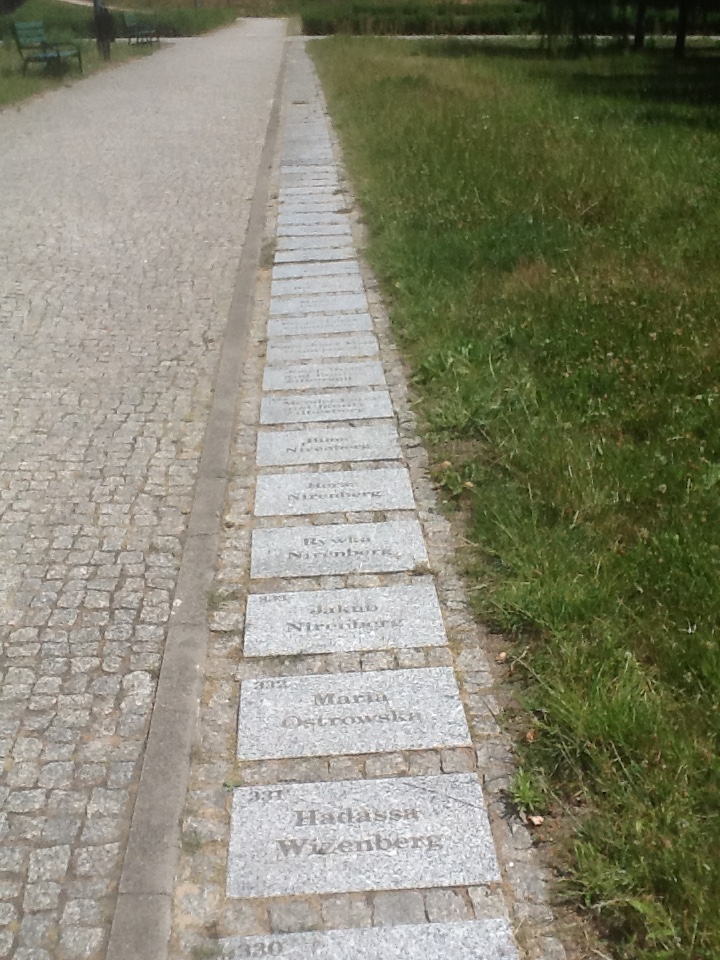
Survivors Park has a walk with the names of survivors. – New York Jewish Travel Guide
This remarkable park spans 15 acres, occupying the very location where the ghetto once stood. Survivors have planted 594 trees within its grounds, including a variety of birches, oaks, larches, maples, and ashes. Each of these trees bears a unique number and is registered in the name of the survivor responsible for planting it. The park extends an invitation to future visiting survivors to carry on this tradition by planting a tree in their honor.
A prominent feature of the park is a pathway adorned with the names of survivors, leading to a memorial mound atop an 8-meter-tall hill. From this vantage point, most of the city’s landscape can be observed.
Its walls take the shape of a six-pointed star of David. Currently, this list bears 6,200 names of Poles, accounting for 28 percent of all righteous among nations worldwide. The heroes’ names are inscribed on a wall within Yad Vashem’s Garden of the Righteous. Among them stands Irena Sendler, renowned for her role in rescuing over 2,500 children from the Warsaw ghetto and providing them with refuge on the “Aryan” side.
A tall triangular pedestal serves as a support for an eagle with outspread wings, symbolizing the Polish nation, along with the poignant words, “He who saves one life, saves the whole world.” Geometric patterns of trees adorn both sides of the pathway, encircled by walkways leading to a square featuring a stone commemorating the park’s establishment. Granite plaques, bearing the names of survivors and tree numbers, are positioned along the pathway.
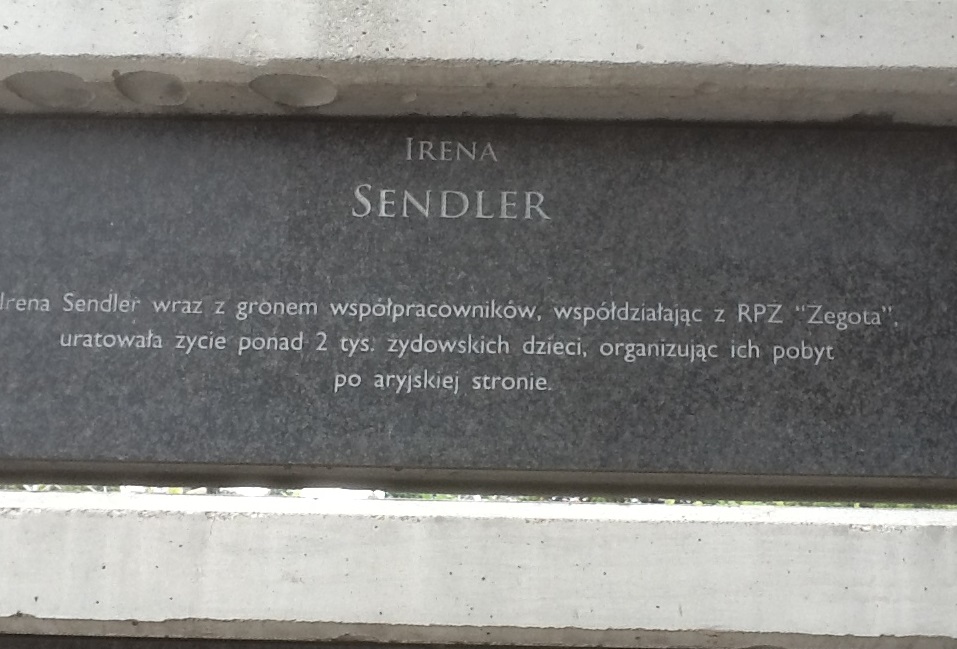
To discover more about the Marek Edelman Dialogue Center and Survivors Park, the ideal point of contact is spokesperson Ms. Justina Tomaszewska, who can be reached at j.tomaszewska@centrumdialogu.com.
Jewish Community Center and Synagogue
Opposite the splendid Credit Society building stands the main gateway to the heart of Lodz’s Jewish community, which consists of approximately 150 to 200 Jews. The Credit Society building itself served as the most significant institution financing the construction of factories in Lodz during the 19th century. Across the street, at No. 18 Pomorska, one can find Lodz’s most vital Jewish institutions, including the community center, synagogue, a newly constructed mikveh (a ritual bath, a source of pride for the Lodz community), and a guest house named Linat Orchim.
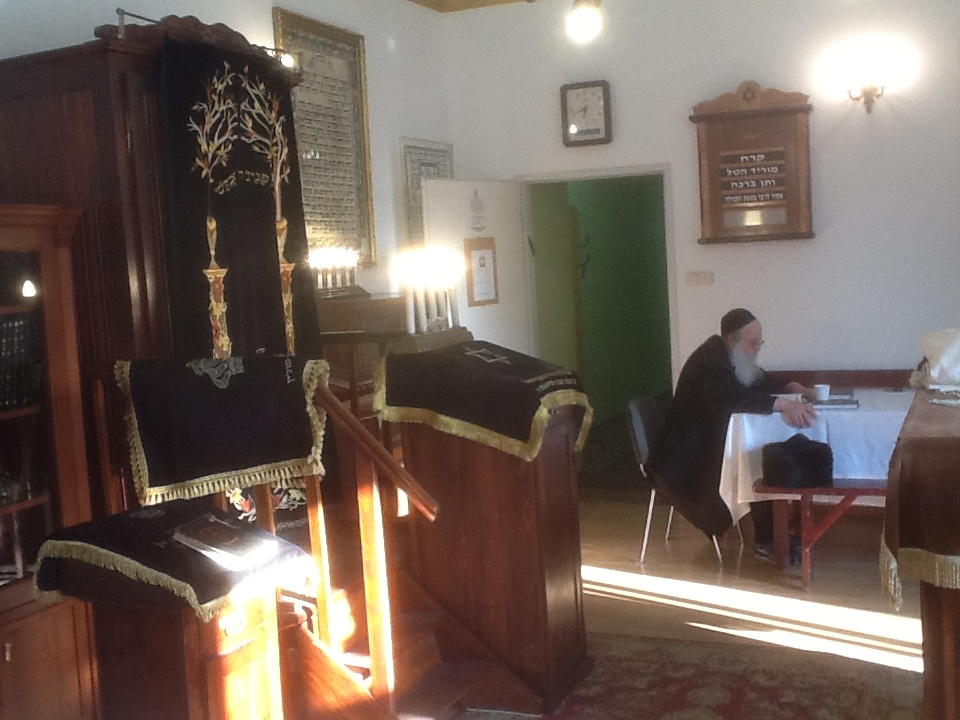
Lodz Synagogue- New York Jewish Travel Guide
Rabbi Dawid Szychowski, the spiritual leader of the community, has also taken on the role of the recently appointed emissary to Lodz for Shavei Israel, an Israeli organization that encourages individuals with Jewish ancestry to strengthen their ties with Israel and the Jewish people. According to Rabbi Szychowski, there are an estimated 2,000 to 2,500 Jews residing in Lodz, a conclusion drawn from the prevalence of Jewish names on intercoms throughout the city. Rabbi Szychowski actively engages in the city’s social life, representing the Lodz Jewish community during both local and national celebrations, providing education about Judaism, and more.
The guest house Linat Orchim, overseen by the local Jewish community, offers accommodations within a meticulously restored 19th-century building. Inside, guests can expect immaculate rooms with twin beds and spacious suites featuring private balconies. Religious services are conducted at the adjacent synagogue under Rabbi Szychowski’s guidance. The Jewish community in Lodz is on the rise, drawing individuals from other cities who come to visit or make this beautiful city their home. During holidays, tables are laden with visitors, and many lend a hand in preparing meals for Friday Shabbat dinners.
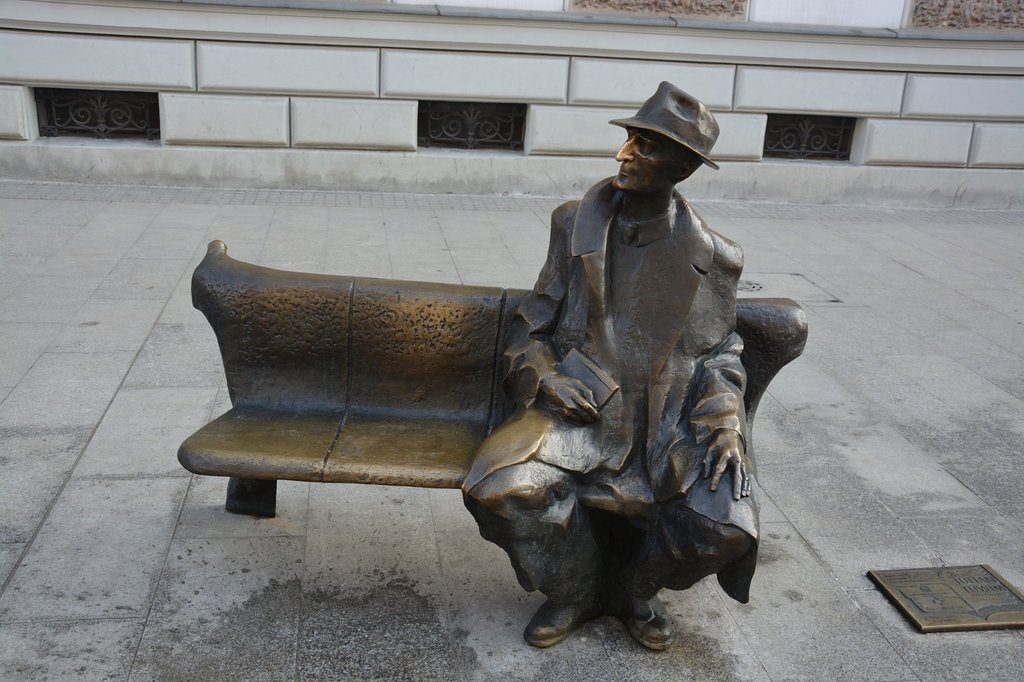
Julian Tuwim – New York Jewish Travel Guide
In addition to its thriving textiles industry, Lodz boasts a flourishing film industry that has earned it the nickname “Hollywood.” For a long time, Lodz has held the distinction of being the epicenter of Polish filmmaking. The city has been home to numerous celebrated Polish directors, including Roman Polanski, Andrzej Wajda, and Krzysztof Kieslowski. A unique testament to this cinematic legacy is Lodz’s own version of Hollywood Boulevard: The Walk of Fame, situated outside the Grand Hotel on Piotrkowska Street, adorned with bronze stars honoring prominent figures from the Polish film industry.
One of the most notable locales in Lodz is found at Piotrkowska 138/140, where OFF Piotrkowska is situated. It has been transformed into a cultural and creative hub since 2011, breathing new life into a former spinning and weaving factory for the benefit of tourists and residents alike. Approximately 50 small businesses, including designers, architects, restaurants, clubs, galleries, and concept stores, thrive within this vibrant space. In 2014, OFF Piotrkowska earned the title of “New Wonder of Poland” in a contest organized by National Geographic, solidifying its status as a cultural gem in Lodz.
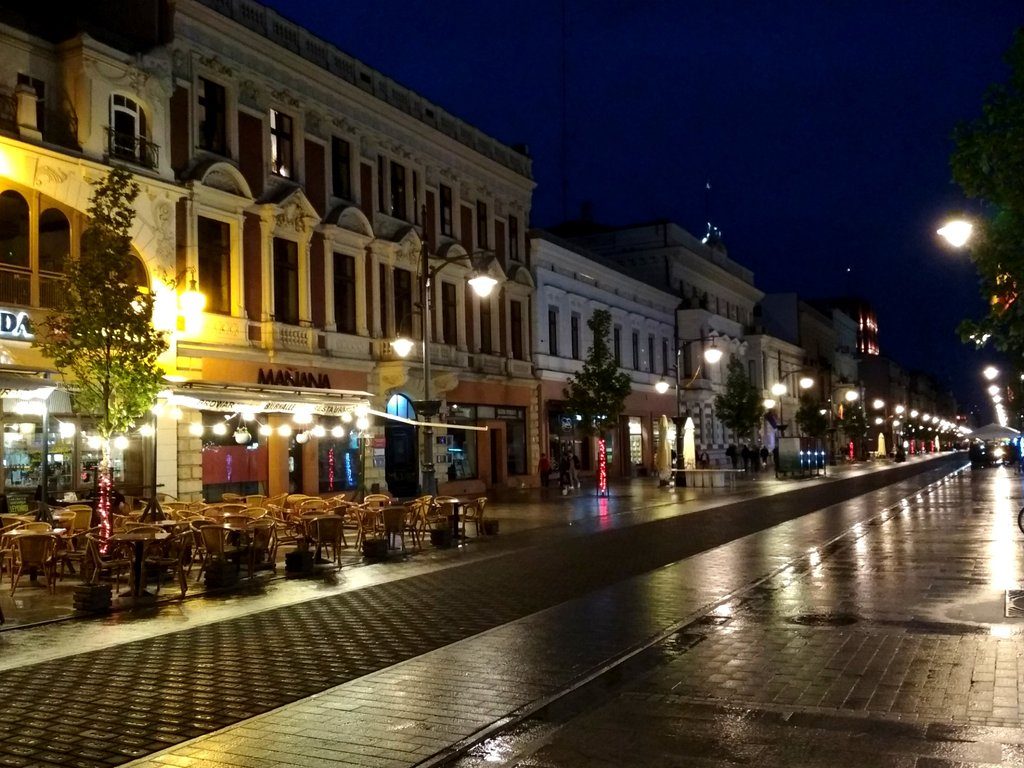
Piotrkowska Street- New York Jewish Travel Guide
One must-visit attraction in Lodz is Manufaktura, the largest shopping, entertainment, and service center in Poland and one of Europe’s largest. Built on the historic site of the Izrael Poznanski factory, it seamlessly blends tradition and modernity, becoming an integral part of Lodz’s identity. Within Manufaktura, you’ll discover a four-star Andel’s hotel, an expansive market of nearly 3.5 hectares hosting concerts, parties, shows, and events that draw visitors from across Poland and beyond. The center also boasts a Museum of Art branch, an Experymentarium (science center), around 60 dining venues, supermarkets, over 260 stores and salons, a cinema, a bowling alley, a fitness club, and Europe’s longest fountain, stretching an impressive 300 meters.
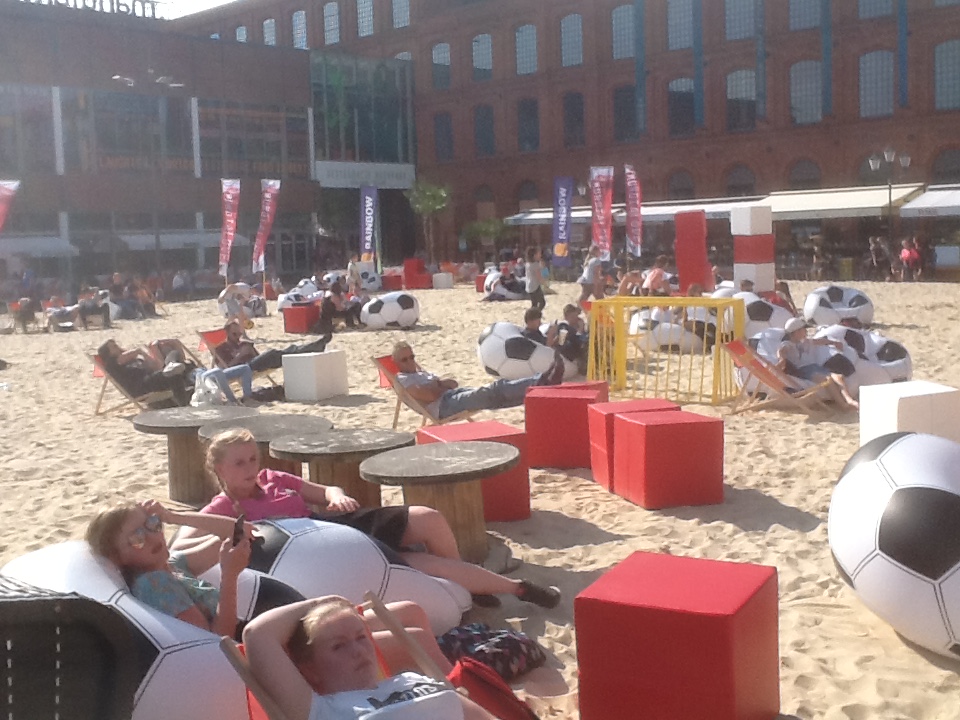
Manufaktura Shopping Center- New York Jewish Travel Guide
While exploring Lodz, you shouldn’t miss the opportunity to visit the Historical Museum of Lodz, also known as the City Museum of Lodz and the Izrael K. Poznanski Palace. This magnificent neo-Baroque-style building, constructed at the turn of the 20th century for textile magnate and philanthropist Baron Izrael K. Poznanski, is a true architectural gem. In my opinion, the facade and the view from the back garden are even more impressive than the exhibits housed within.
In the afternoon, consider exploring one of Lodz’s most popular museums, such as the Museum of the Factory. Located within MANUFAKTURA, the Factory Museum delves into the history of textile factories in Lodz during the 19th century. Another intriguing option is the Herbst Palace and Museum, which once served as the residence of the Herbst family.
Lastly, don’t miss Off Piotrkowska, a former cotton mill transformed into a bohemian-inspired haven filled with bars, restaurants, galleries, and unique shops. It’s an excellent place to conclude your walking tour of Lodz.
For more information, visit:
To plan a trip to Poland, contact the Polish Tourism Board or log on to https://www.poland.travel/en and http://travel.uml.lodz.pl/.
To travel via train, contact Rail Europe or log on to https://www.raileurope.com/.
Story and photography by Meyer Harroch, New York Jewish Travel Guide, and New York Jewish Guide.com
The author took part in a press trip sponsored by the Polish Tourism Board.



You must be logged in to post a comment Login